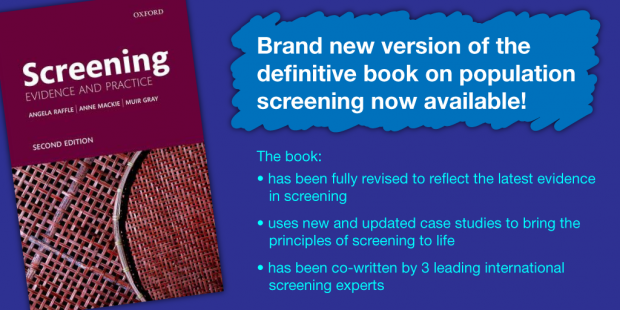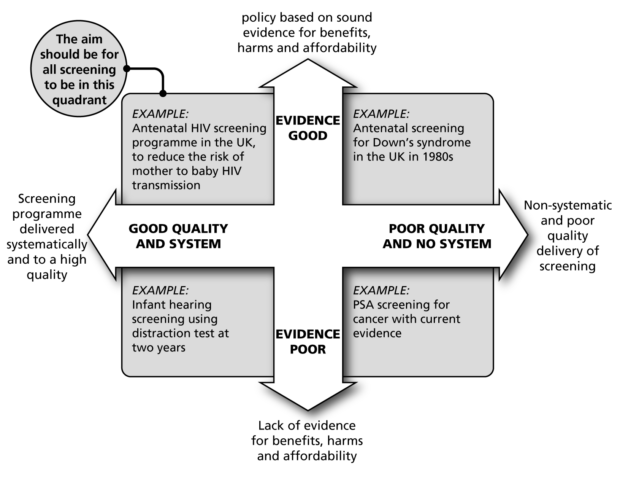
Great News! The much improved and updated second edition of our really useful book Screening: Evidence and Practice (Raffle, Mackie and Gray, Oxford University Press, 2019) is now out.
You can buy a copy online (use this discount code for 30% off) or, if in an academic institution, you can access it electronically through Oxford Scholarship Online.
The first edition
When Muir Gray first said to me in 2001 “I think we should write a book for everyone involved in screening”, I never thought we’d manage it. But after much hard work the first edition was published in 2007.
It proved really popular, including being translated into Japanese and German. People told us they loved the clear language, easy to use index and glossary, practical approach, and the numerous case studies that bring the subject alive.
New edition and new author
When Jo Harcombe tried to persuade me that a second edition was needed I never thought we’d manage that either. Thankfully Anne Mackie stepped in as third author, and our publishers Oxford University Press were really keen for us to do a second edition, so we got started.
It has been a tremendously encouraging experience updating the book. Concepts and language that were hardly in common usage when we wrote the first edition have now become mainstream.
The second edition has enabled us to consolidate these concepts, further improve the terminology, improve the diagrams and update the case studies as well as adding some totally new ones.

Reflecting new evidence and achievements
Other striking changes since the first edition include:
- near universal recognition that screening is about the delivery of quality assured and evidence-based programmes
- that screening is an offer to participants rather than imposed
- that harmful consequences must be measured and acknowledged alongside beneficial ones
- that high quality randomised control trials are the gold standard
- that good national policy must be based on careful assessment of high quality evidence
- attention to the language used about screening based on feedback from people who have been through the process
It has been wonderful to showcase the work of the screening programmes in the book. This includes, for example:
- the success of antenatal screening in reducing mother to baby transmission of HIV
- the rollout of abdominal aortic aneurysm screening based on the high quality Multicentre Aneurysm Screening Study (MASS) trial data
- a better approach to giving balanced information about consequences of breast screening
Thanks
We are incredibly grateful to the people who have helped with the second edition and we hope that it will prove useful for many years to come.
UK NSC blog
The UK NSC blog provides up to date news from the UK National Screening Committee. You can register to receive updates direct to your inbox, so there’s no need to keep checking for new articles. If you have any questions about this blog article, or about the work of the UK NSC, please contact the UK NSC helpdesk.
Leave a comment